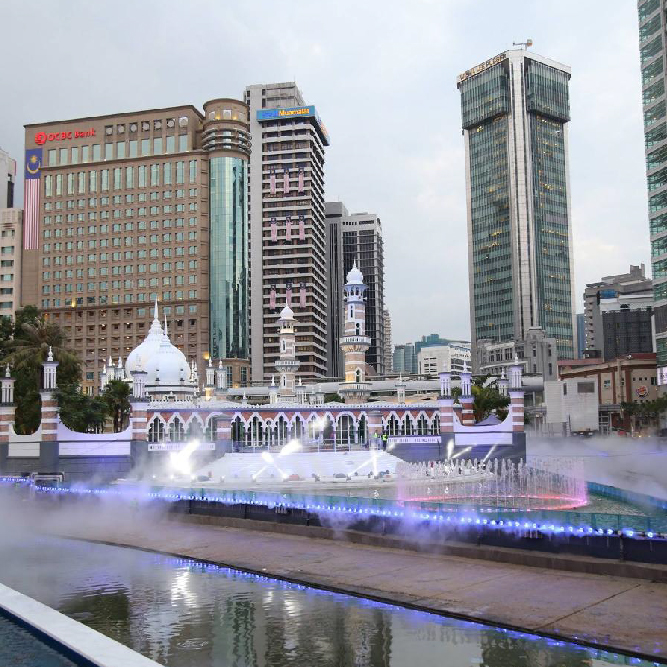KL @ A Glance
Kuala Lumpur city center (KL) is renowned for its tall, futuristic skyscrapers and modern structures. Yet, to experience KL, you 're going to have to walk through its streets and roads to appreciate KL at its best. That's how you're going to be able to smell the food from the hawker stalls, appreciate the murals on the some of the older buildings. The more you walk, the more you will come to realise that KL is not just about concrete skyscrapers, but is a work of architectural art. Sauntering along the streets, you would be able to take in the sights of KL better.
KL's establishment was almost an accident. In 1857, 87 Chinese prospectors, looking for tin, arrived at the meeting point of the Klang and Gombak rivers and set up camp, naming the place Kuala Lumpur, meaning 'muddy confluence'.
Getting Around KL
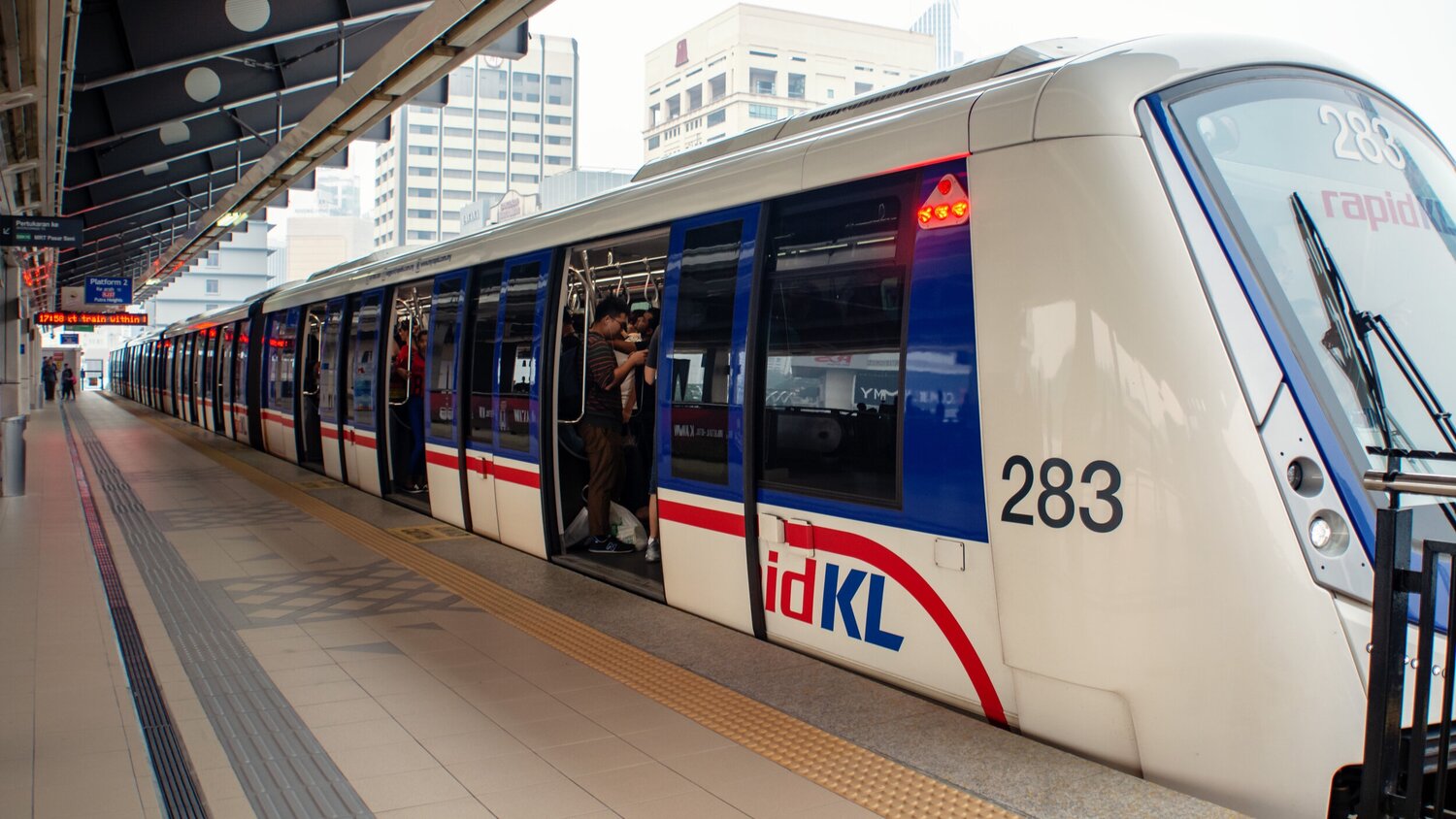
Light Rail Transit (LRT)
The Light Rail Transit (LRT) is one of the most commonly used public rail transport. The LRT is divided into two lines; Ampang/Sri Petaling and Kelana Jaya. This is the best means of transport if you are thinking of visiting places that aren't within walking distance of Kuala Lumpur city centre.
Helpline: 03-7885 2585
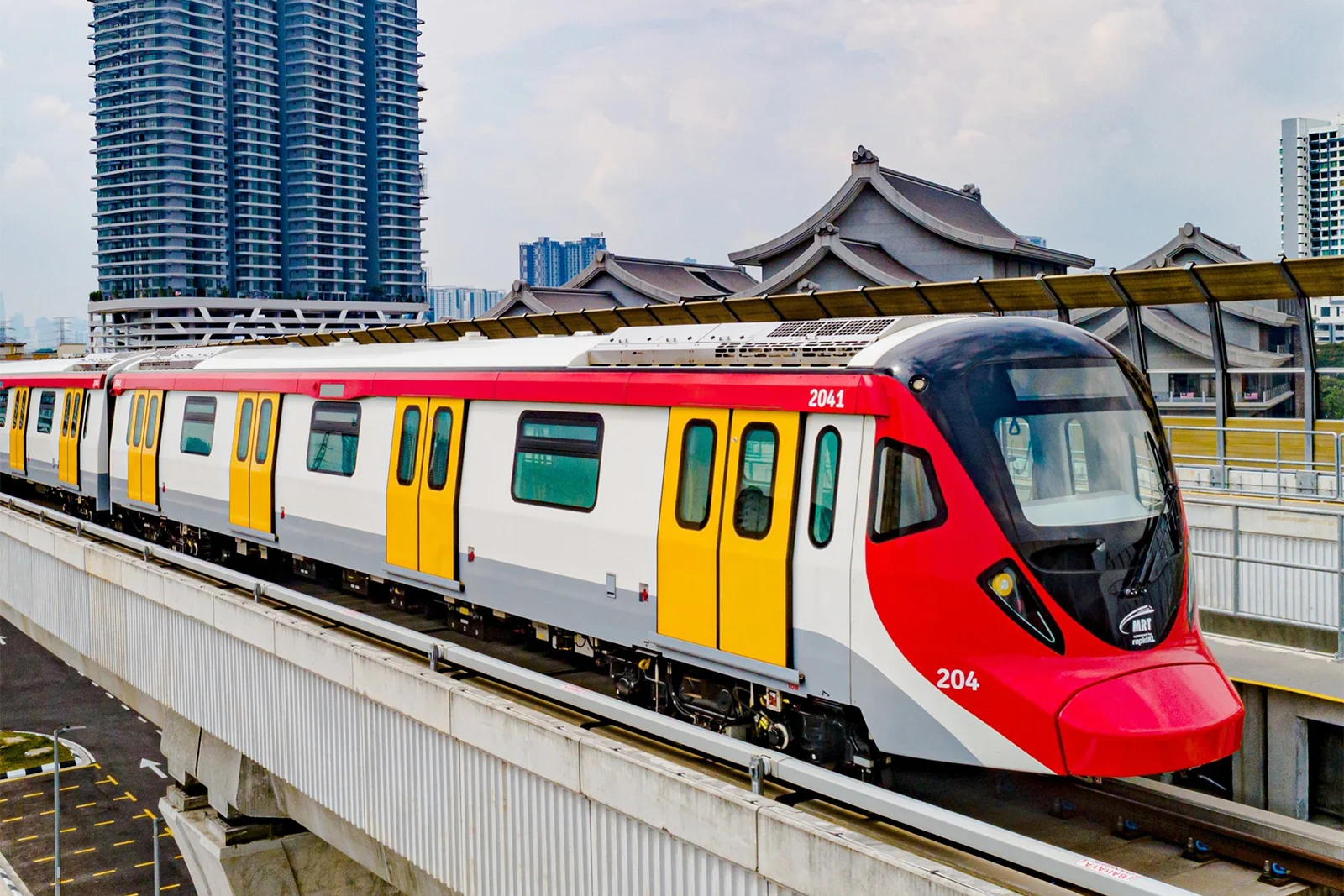
Mass Rapid Transit (MRT)
The Mass Rapid Transit (MRT) is divided into two lines; the first is the Sungai Buloh-Kajang line that is 51km-long with 31 stations along its route. All the stations start operating at 6.00 am daily. Closing times varies based on respective stations. A single journey is priced at RM1.20 and upwards.
Helpline: 1800-82-6868
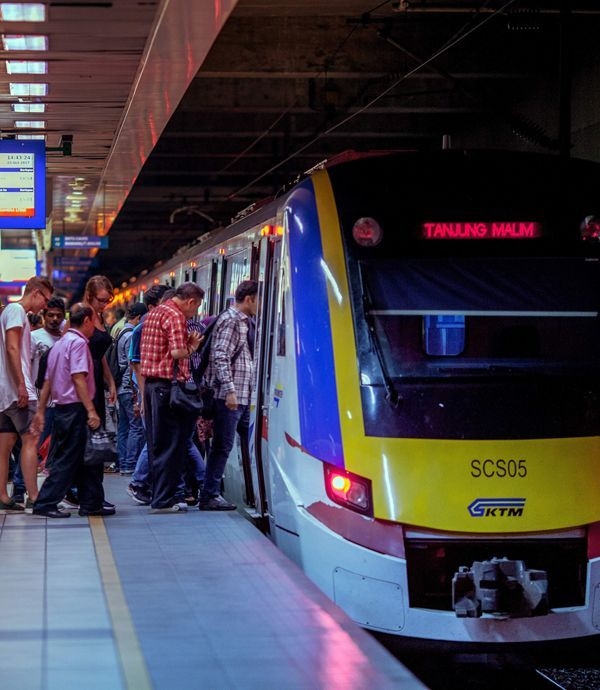
KTM Komuter
The oldest rail system in Malaysia, the KTM is catered more for the locals rather than tourists. It acts as a cheaper travel alternative to longer destinations. The lines are divided into two; Rawang - Pelabuhan Klang and Batu Caves - Seremban.
Helpline: 03-2267 1200
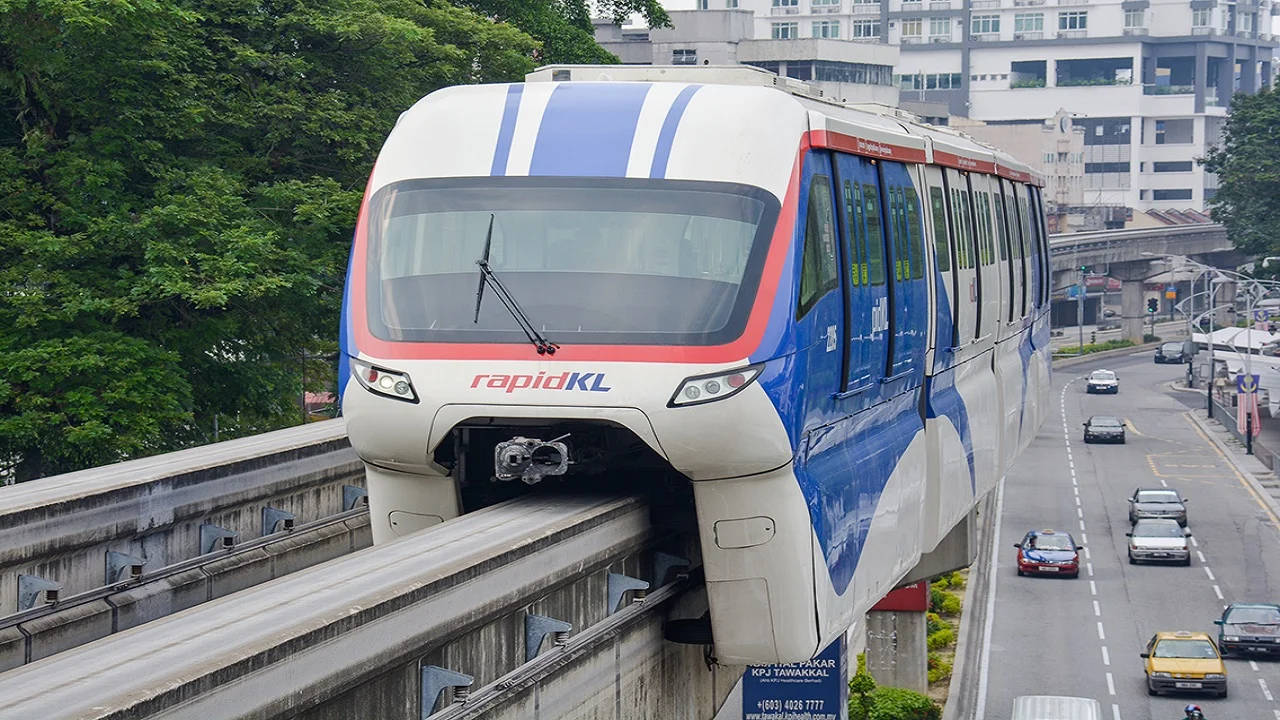
KL Monorail
The KL Monorail is a simple yet well-connected train system which runs between Kuala Lumpur's transport hub KL Sentral and Titiwangsa in the heart of KL. It acts as a bridge between Kuala Lumpur city centre and the inner areas of Kuala Lumpur. The KL Monorail starts operations at 6.00 am and ceases at 12.00 am.
Helpline: 03-2267 9888

RapidKL Bus
The RapidKL Bus is commonly seen at most train stations and usually acts as a transit-based mode of transportation for passengers to directly get to their preferred destinations. Each trip on the bus can cost up to RM5.00 per trip which can be paid by using exact change or through tapping your Touch n' Go card upon entry and exit.
Helpline: 03-7885 2585
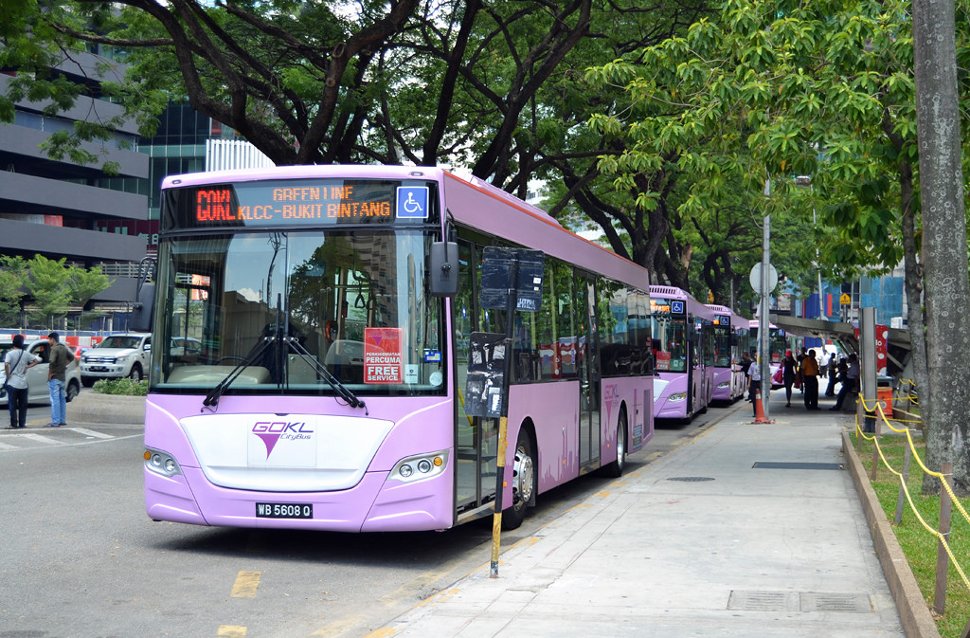
Go KL City Bus
Easily recognised due to its lilac-coloured exterior, the Go KL City Bus is a city bus service in Kuala Lumpur that takes you to the most famous districts of the city, train stations, shopping malls and landmarks-free of charge. The bus operates on four main routes, the Green, Purple, Blue and Red Line, which run every day at five-minute intervals during peak hours and 15-minute intervals during off-peak hours.
Helpline: 03-2603 6600
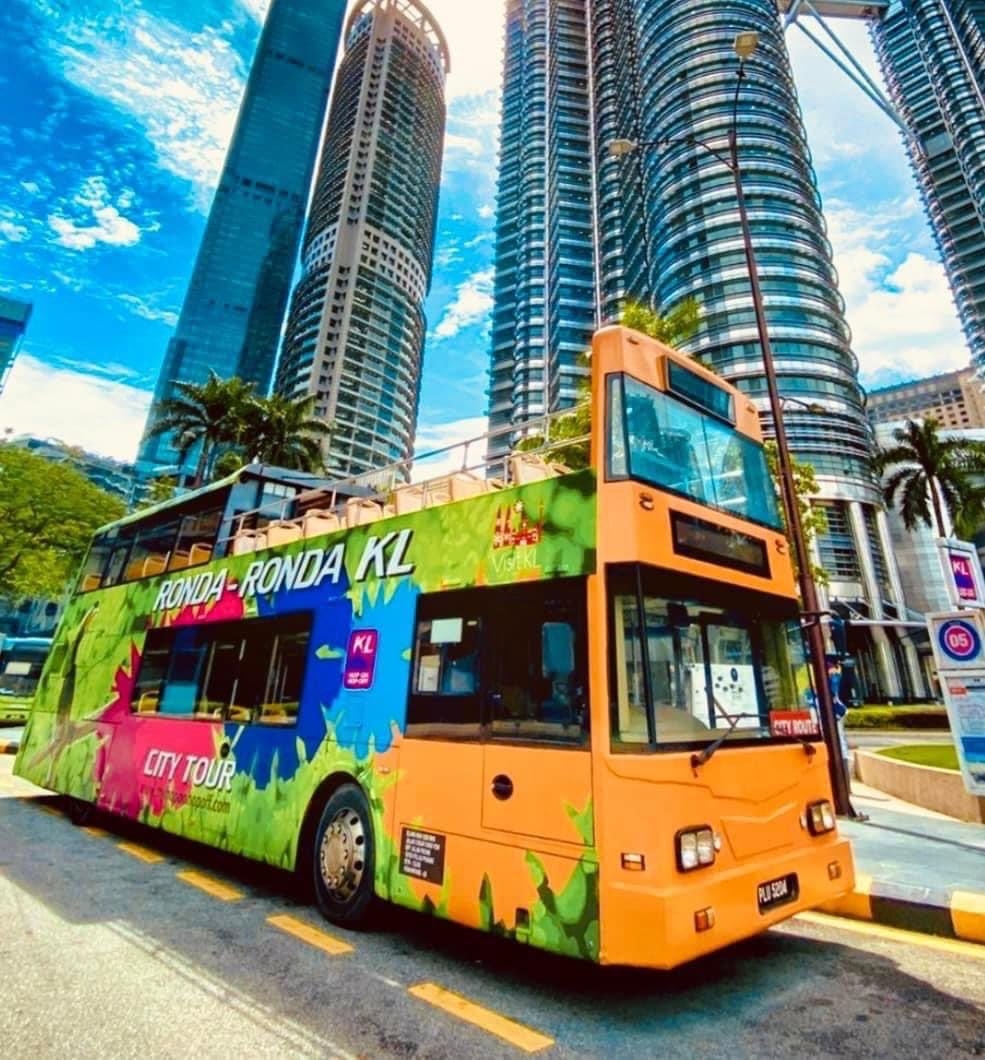
KL Hop-On Hop-Off
With double-decker and sky-roofed busses carrying sight-seeing tourists, the KL Hop-On Hop-Off Bus provides a quick and easy city tour with 23 stops covering more than 40 attractions in Kuala Lumpur areas. The KL Hop On-Hop Off City Tour runs daily from 9 am to 8 pm at 30-minute intervals. The tour follows the "hop-on, hop-off" concept, which allows ticket holders to hop on and off the bus whenever and wherever they want at all 23 stops.
Helpline: 1800-88-5546
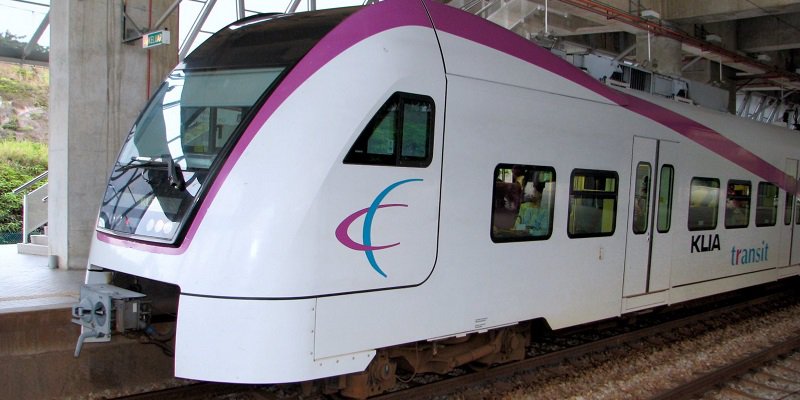
From KLIA/KLIA2 to Kuala Lumpur
The express train or better known as ERL travels between international airports (KLIA and KLIA2) to KL Sentral. This is one of the fastest forms of transport to travel to and from the airport (approximately 25-35 minutes). However, the tickets could be more on the pricier side (RM55/person; on-way). Tickets can be purchased online or at the main station in KL Sentral. The train service provides high-speed WiFi onboard.
Helpline: 03-2267 1200

Bus
Buses are just about the cheapest mode of transportation to get from the airport to the city and vice versa. They are relatively safe and fairly comfortable. The fair is also quite affordable (RM12-RM15 per pax; depending on your pick up station). The standard travel time is 1 hour to 1 hour 15 minutes.

E-hailing service
E-hailing has become one of the most popular modes of transport modes in Malaysia by locals and foreigners alike due to its high reliability and access due to its user-friendly mobile app. One of the best reasons to use E-hailing service are transparent and fixed fares made clear even before a booking is made. Passengers are also covered with accident insurance the moment they enter a car provided through the E-hailing service provider.
Fare: RM65 (including toll fares)
Duration: 1-2 hours (depending on traffic and destination)
Travel Tips

Weather
The climate in KL is quite humid all year-round. Anyone travelling to KL must always be ready for rains at any time of the year. Regardless, the best time to visit KL is from May-July or December-February.
The weather can be pretty hot between March - April. Due to the forest fires from Sumatera which typically happens between June - August, the dust particles may cast a haze over KL thus making it not an ideal time to visit the city.


Currency
Malaysia’s currency unit is divided into two. The term Ringgit Malaysia (RM) is used to refer to paper money. The denominations are RM1, RM5, RM10, RM 20, RM 50 and RM100. Whereas the coins are referred to as sen (cents). The denominations are 5 sen, 10 sen, 20 sen and 50 sen.
Samples of Ringgit Malaysia Notes:
1. Current Version of Notes and Coins
https://www.bnm.gov.my/ (Sample of Notes)
https://www.bnm.gov.my/ (Sample of Coins)
2. Old Version of Notes and Coins
https://www.bnm.gov.my/

Exchanging Money
Exchanging money in Malaysia is relatively easy as you can find money changers easily. If you want to withdraw money, make sure your home bank ATM card is supported by banks in Malaysia. Also, bear in mind that your home bank can charge an overseas withdrawal fee. You may also realise that the Malaysian ATM adds its own fee. Ask your home bank before you leave what charges will be added-and check the ATM notices to understand any extra charges. Most places in Kuala Lumpur accept debit/credit cards, just be sure to notify your home bank about your trip to avoid your transactions to be barred and your card getting blocked.

Visa and Passport
Passports must be valid for at least 6 months at the time of entry. Visa requirements vary from time to time, so it is best to check with the Malaysian embassy or consulate or the Immigration Department website.

Hotel
Be sure to have your hotel bookings printed. Booking a hotel in Kuala Lumpur is easy, but if you are travelling during peak periods, you may want to book in advance to avoid disappointments. When booking a stay, be sure to check how far it is from the places you want to visit. Check if your hotel provides free Wi-Fi. Most hotels provide free Wi-Fi for their guests. But in case they don’t, you will need to purchase a prepaid phone line with a data plan. There’s a myriad of budget to 5-star hotels to choose from in Kuala Lumpur.

Internet
If you do not plan to switch on your roaming while you are travelling to Kuala Lumpur, fret not as most hotels give you access to their Wi-Fi. Whilst most cafés in Kuala Lumpur provide free Wi-Fi with the purchase of a drink or food. There are also many free Wi-Fi hotspot areas in Kuala Lumpur so make sure to check out the area for free Wi-Fi. It is also advisable to buy a prepaid SIM card with a data plan to make things easier when you are on the go.

Clothing
The heat and humidity in Kuala Lumpur can be intense. Therefore, be sure to pack light and breathable clothes that will help you stay cool and avoid heatstroke. Cotton is a good choice, as it is designed to absorb moisture. If your hotel comes with a swimming pool or you are planning to head to the beach, don’t forget to pack your swimsuit.

Comfortable Footwear
Since you will be doing a LOT of walking so you should consider wearing sensible shoes that are very comfortable. We recommend packing a pair of sneakers as well as flats and sandals.

Sunscreen
Make sure to pack in your sunscreen, especially if you don’t want to be sunburnt. The sun can be scorching hot at times.

Raingear
Since the rain can be pretty unpredictable in Kuala Lumpur, don’t forget to pack your raincoat or a travel-sized umbrella. You don’t want to be soaked to your skin if it rains suddenly.

Medicine
DO NOT forget to pack your prescription tablets and any other medicines that you think you might need in case you fall sick.

Prepaid Sim Card
Malaysia mobile phones use the GSM network, if your phone has a roaming facility, it will automatically hook-up to a local network. Otherwise, prepaid sim cards can be purchased starting at RM20 for registration and talk time. The three main phone providers in Malaysia are Maxis, Celcom and DiGi. Buying prepaid sim cards is easy since you can find kiosks selling prepaid sim cards almost everywhere.
Three Main Phone Providers:
1. Maxis / Hotlink
2. Celcom
3. Digi
Other Phone Providers:
1. U Mobile
2. Tune Talk
3. Unifi
4. Yes
5. redONE
6. MCalls
7. Yoodo
8. XOX

Dialing Prefixes
Each city has its unique area code for landlines. 03 is Kuala Lumpur’s area code followed by the eight-digit number when you call from your mobile phone. Example: 03-12345678 Whereas, every call to a mobile phone requires a three-digit prefix (Maxis = 012, Celcom = 019, DiGi = 016), followed by the seven-digit or eight-digit subscriber number. Example: 012-123 4567

Emergency Number
Police/Ambulance: 999 (112 from a mobile phone) Fire and Rescue Department (Bomba): 994 (112 from a mobile phone) Civil Defence Tel: 991 Tourist Police Hotline Tel: 03-2149 6590


